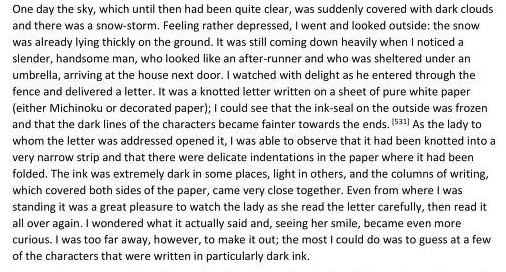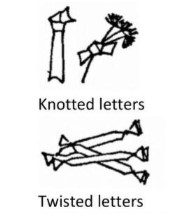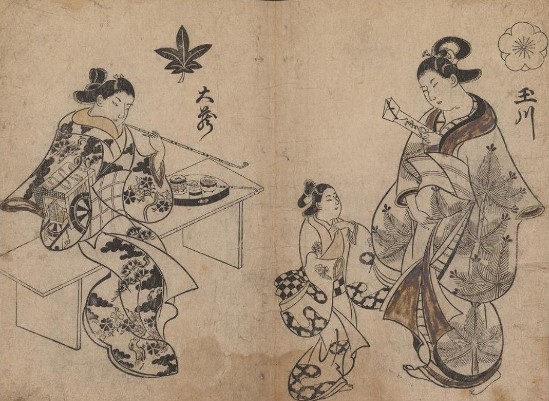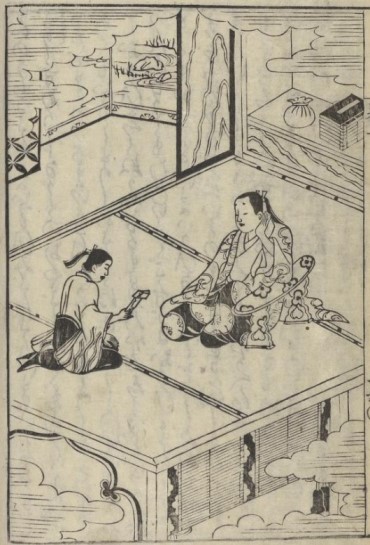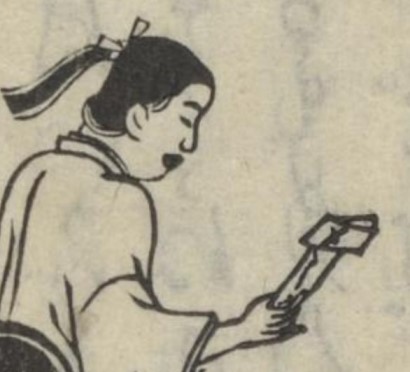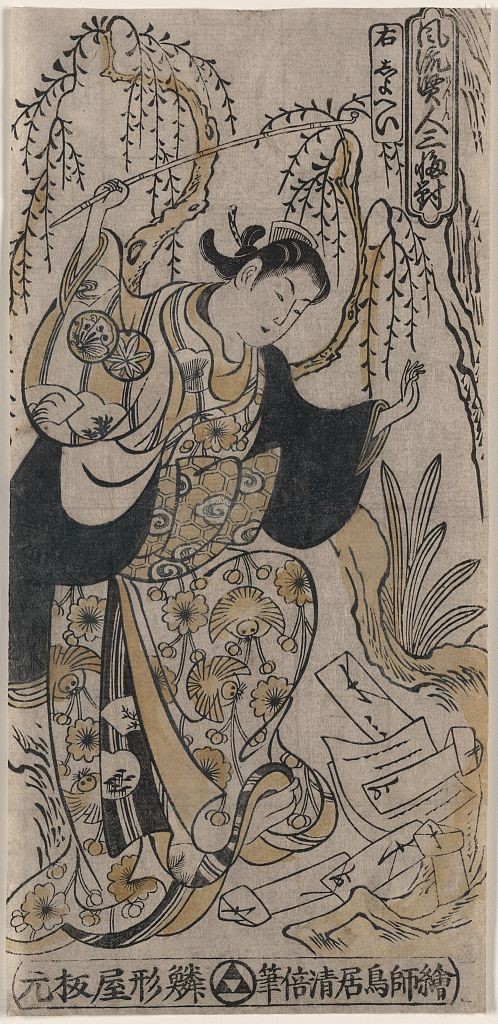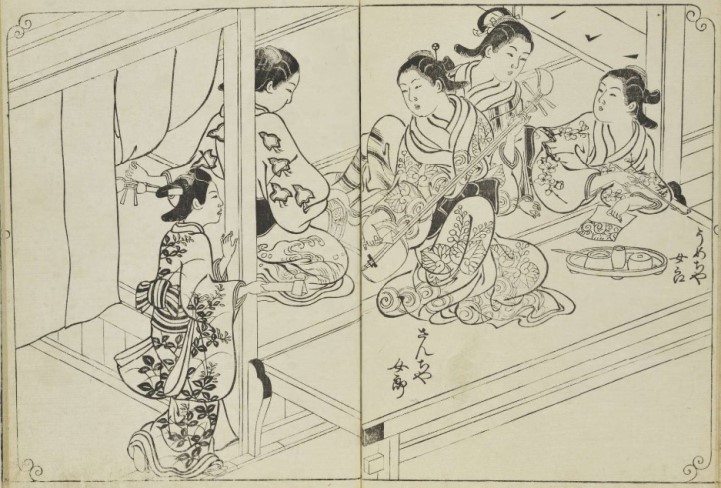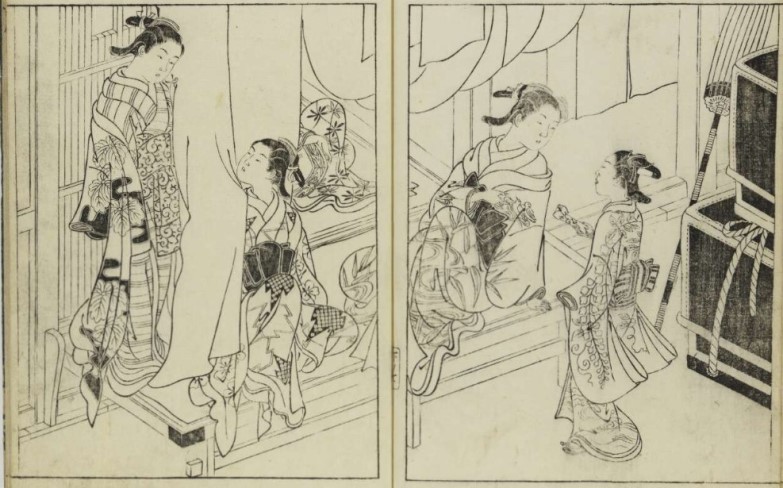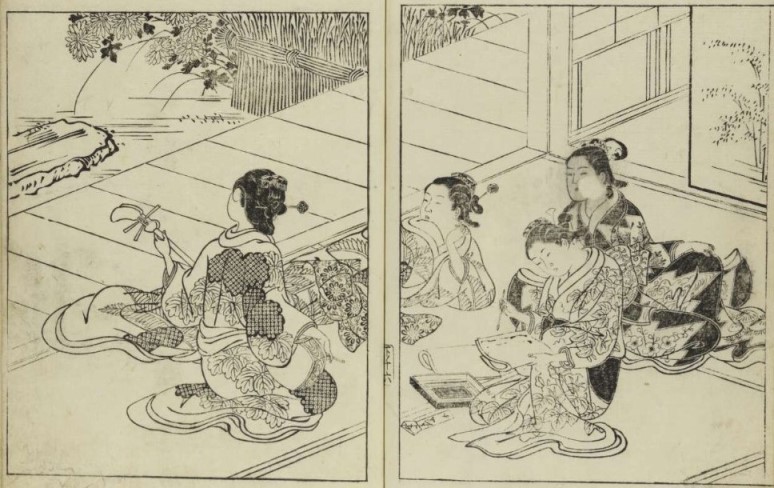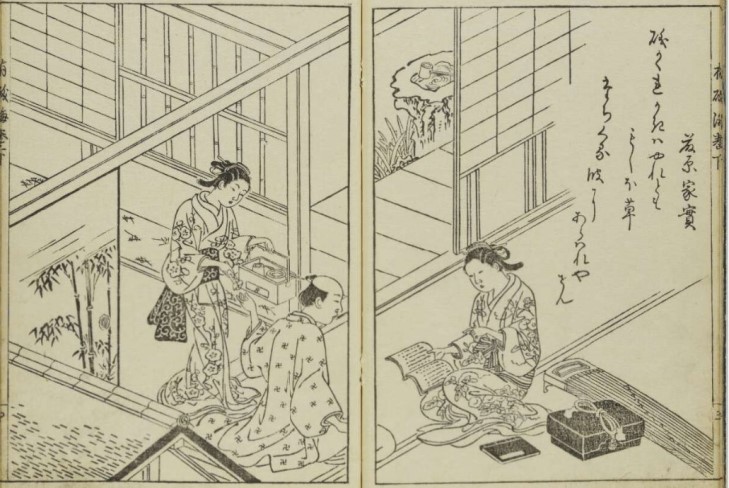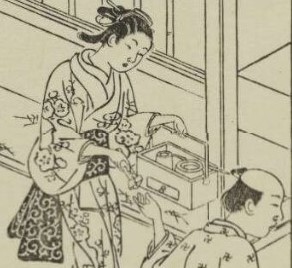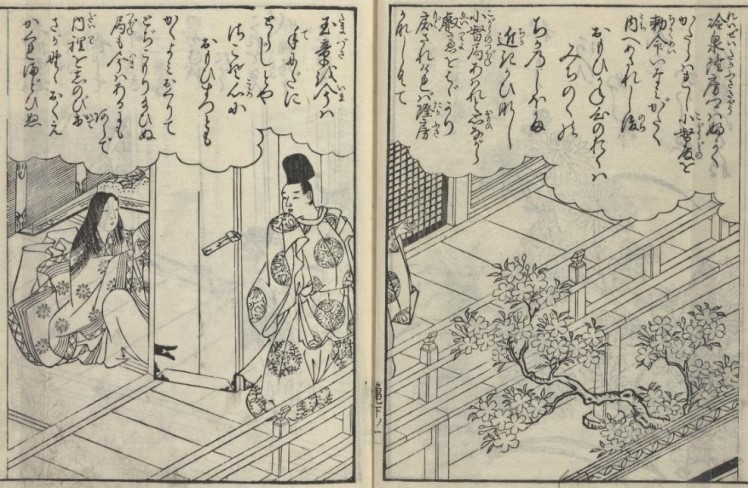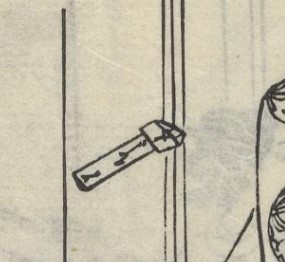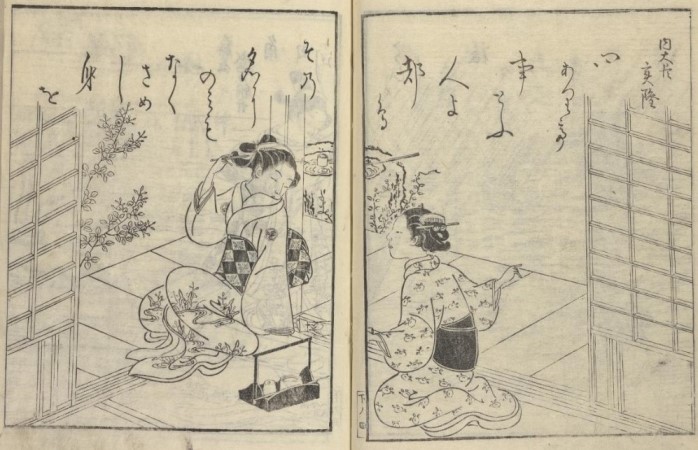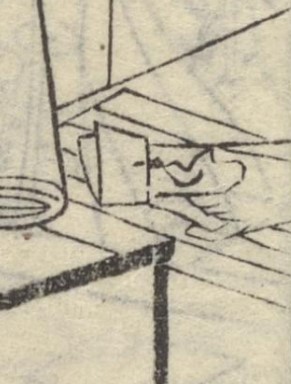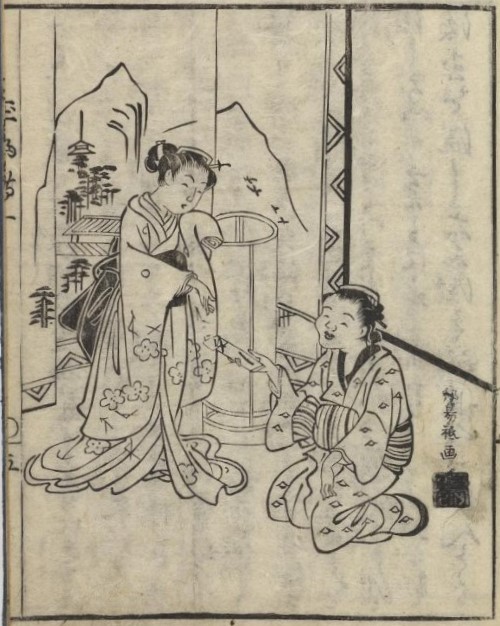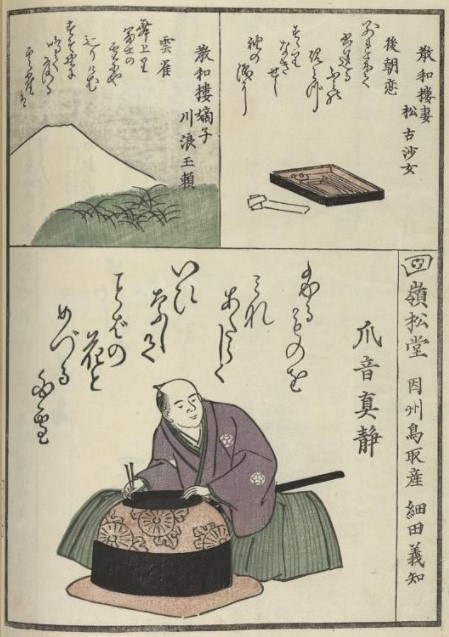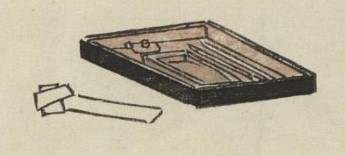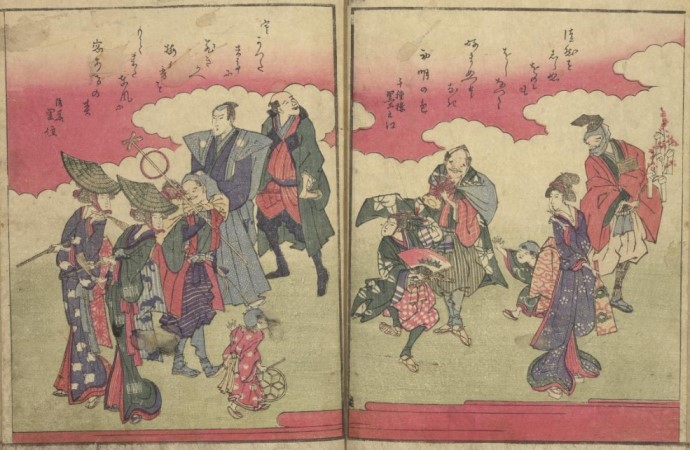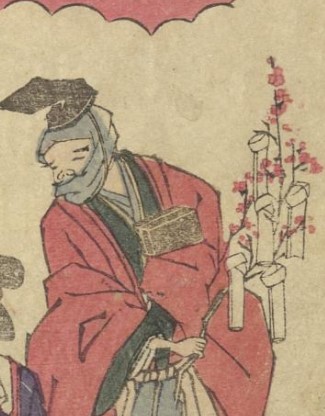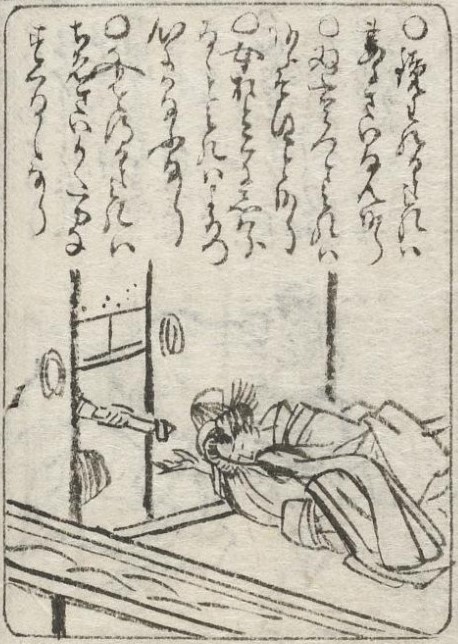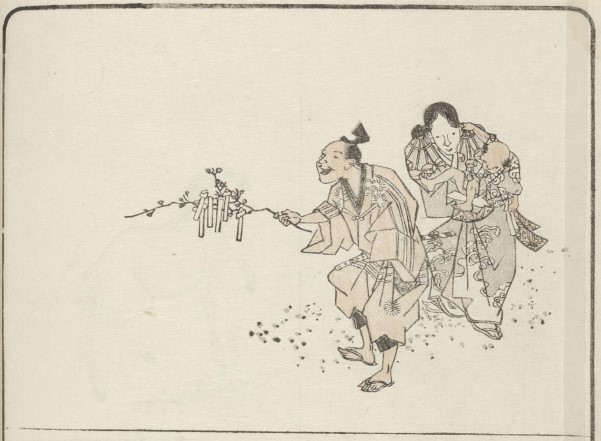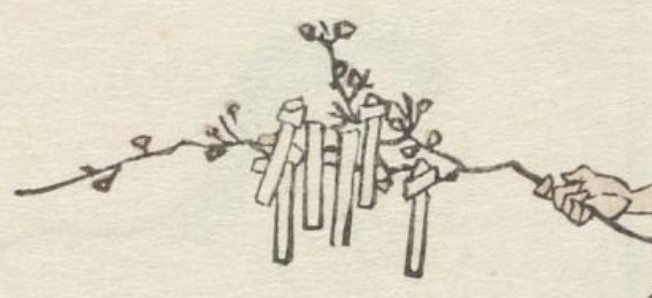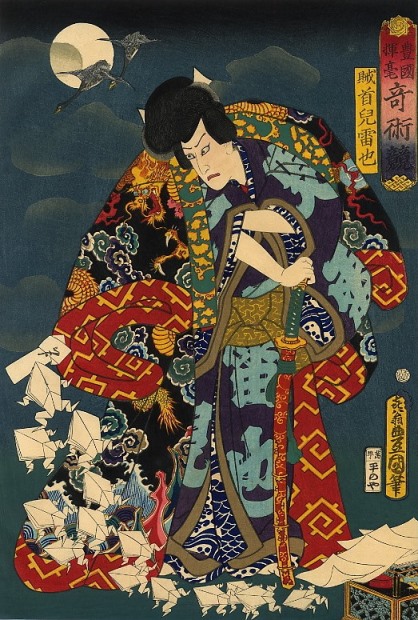| The Public Paperfolding History Project
Last updated 10/1/2024 x |
|||||||
| Japanese Knotted Letters | |||||||
| This
page attempts to record what is known about the history
of Japanese Knotted Letters. Please contact me if you
know any of this information is incorrect or if you have
any other information that should be added. Thank you. Knotted letters occur in many Japanese prints. The knot is generally tied right at one end. The shape of the knots seem to vary. Where letters or other documents are tied in a pentagonal knot in the centre I have recorded them on the page about Pentagonal Knots. Sometimes a number of knotted letters are attached to a branch. I do not understand the significance of this practice. ********** 1002 The 'Pillow Book of Sei Shonagon', (accessed in the translation by Ivan Morris) which was completed in 1002, contains several references to knotted letters: In her list of 'Depressing Things' Sei Shonagan mentions a 'twisted or knotted' letter:
*** There are three other mentions of twisted or knotted letters:
***
***
Note 57 explains:
An appendix at the end of the book illustrates the two types of letter:
********** 1021 'Genji Monogatari' (The Tale of Genji) was written by Murasaki Shikibu and was substantially complete by 1021. It contains many references to letters, some of which are said to be knotted and are identified in the notes as musubi-bumi. In several of his notes, and in the glossary, the translator makes a connection between knotted letters and love letters, although there are other love letters in the story that are not stated to be knotted letters.
********** 1702 This print showing a courtesan holding a knotted letter is from the picture book 'Yu jo no zu' (Portraits of Courtesans) by Masanobu Okamura, which was published in 1702.
********** 1707 This print by Okumura Masanobu from Vol 1 of 'Wakakusa genji monogatari', which was published in 1707, also shows a knotted letter.
********** 1716 This print by Torii Kiyomasu (1694 to 1716), titled Shohei, depicts the actor Sanjo Kantaro playing the part of a courtesan. She is trampling letters, possibly love letters, some of which are knotted but others of which are folded in a different way. Source Library of Congress: Shohei.
********** 1723 In this print from 'Hyakunin Joro Shinasadame' (100 Women Classified According to Their Rank), which was published in 1723, the woman on the left is holding a knotted letter in her right hand.
********** 1731 Both these prints from volume 3 of 'Ehon tokiwagusa', which was published in 1731, also show knotted letters. In the first print the woman on the right is holding one in her hand. In the second print one is lying on the floor.
***
********** 1736 In this print from volume 3 of 'Ehon Ariso-umi', published in 1736, the woman on the left is handing a knotted letter to the man.
********** 1747 In this print from volume 3 of 'Ehon kame no oyama', which was published in 1747, the woman on the left has just thrown a knotted letter at the man outside.
********** 1768 This print, which also shows a knotted letter, is by Suzuki Harunobu (1724-1770) from Volume 3 of 'Yachiyo gusa' which was published in 1768.
********** 1775 This print is from Volume 1 of 'Gyokufu den' by Son Ekigi, which was published in 1775.
********** 1821 A knotted letter appears on this page from 'Azuma buri roku rokkasen jinmei roku' by Takashima Chiharu (1777-1859), which was published in 1821.
********** 1823 This print by Akatsuki no Kanenari from 'Ogura hyakushu ruidaibanashi' which was published in 1823 shman carrying a branch (a cherry tree branch?) to which knotted letters have been tied.
********** 1830 This page from the picture book 'Eitai ozassho sanzeso', which was published in 1830, shows a knotted letter being handed through a doorway to a sleeping woman.
********** 1832 This print by Yanagawa Shigenobu (1787-1832) which shows knotted letters attached to a branch is from the picture book 'Yanagawa gajo' which was published sometime between 1820 and 1832.
********** 1863 This print from 1863 by Kunisada Utagawa, known as Jiraiya, from the series Toyokuni kigo Kijutsu kurabe (comparison of witchcrafts), also features a knotted letter (left middle) held in the mouth of the leading frog.
********** |
|||||||


